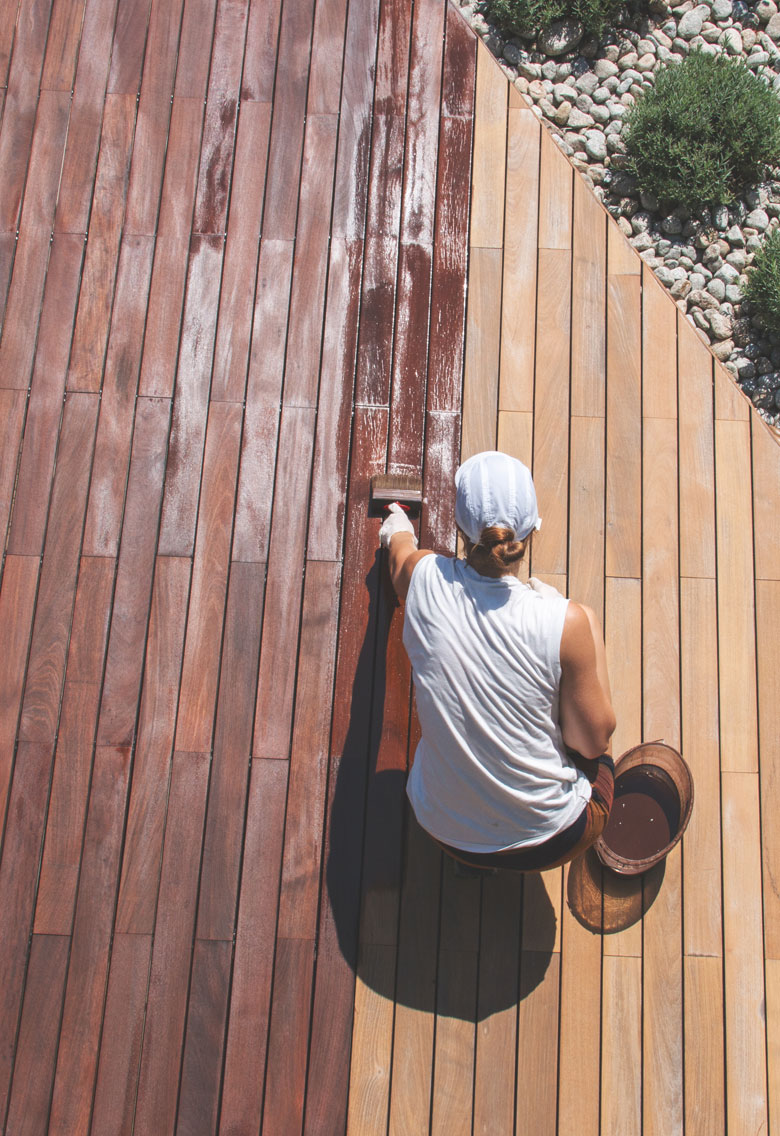
Weather-proofing Your Deck
A well-maintained deck can be the pride of any home, however, the ever-changing British weather can take a toll on even the most robust decking. From the scorching hot summers to the bleak mid-winter, each season presents its own challenges and without proper care, your deck could suffer.
Knowing how to protect your decking from adverse weather is essential to ensuring its longevity and usability throughout the year. Below are a few tips, considerations and best practices that can help you weather-proof your deck for all seasons.
Understanding Your Deck Materials
The first step to weather-proofing your deck is to establish the type of material it is made from. Different materials respond to weather in different ways and knowing how yours behaves will help you to choose the right protection methods.
Protecting Wooden Decking
Wooden decks, particularly those made from pressure-treated timber, cedar or redwood are more common in the UK. Wood is naturally beautiful but can be susceptible to moisture which then leads to rotting and UV damage which leads to fading and splintering. While cedar and redwood are more resistant to rot, they still require regular sealing to protect them from the elements.
Composite Decking
Composite decking, made from a mix of wood fibres and plastic is gaining popularity for its durability and low maintenance. It is more resistant to weather-related wear and tear than wood is but it can still fade over time and will need occasional cleaning and sealing.
Vinyl
Vinyl or PVC decking is highly resistant to moisture and doesn’t require sealing or staining. It can, however, become brittle in very cold weather and may crack under heavy weight or impact; a polyurethane coating can help bolster the durability and extend the lifetime by some way.
Essential Tools and Materials For Weather-proofing
As with anything, make sure you have the right tools and materials to hand before you begin.
- Sealants, Stains and Paints: Depending on your deck material, choose a sealant, stain or paint that offers UV protection and water resistance. For wood, a penetrating sealant is often best as it soaks into the wood and provides deeper protection. Composite decking usually requires a more specialist product so be sure to look out for this.
- Protective coverings: Consider using a durable, weather-resistant tarp or custom deck cover to protect your deck from the more harsh weather when not in use.
- Tools: You will need brushes or rollers for applying sealant, sandpaper or a more heavy-duty sander for prepping the surface as well as a pressure-washer for cleaning. Be sure to use the appropriate safety equipment (gloves, masks, goggles) – this is particularly important when you are handling any chemicals.
How To Weather-proof Your Deck
Once you are prepared and have everything ready, you can begin the weather-proofing process.
Step 1: Cleaning the Deck
Start by thoroughly cleaning your deck. Use a pressure-washer to remove any dirt, mould or damp – anything which could compromise the protective coatings. For more stubborn spots, a deck cleaner or mild detergent can be used. Allow the deck to dry completely before moving on to the next step.
Step 2: Repairing Any Damage
Inspect your deck for any signs of damage, such as loose nails, cracked boards, splinters or rotten wood. Replace any damaged boards and secure any loose fastenings.
Step 3: Sanding the Surface
If your deck is made of wood, sanding the surface is crucial. This step smooths out any rough areas and removes the remnants of old sealants or stains. Sanding also helps to open up the wood grain, allowing the new sealant to penetrate more effectively.
Step 4: Applying a Weather-proof Sealant or Stain
Choose a dry, mild day to apply the sealant or stain. Use a brush or roller to apply an even coat, following the wood grain where possible. Be sure to pay attention to any cracks and joints, anywhere water is more likely to seep in.
Allow the first coat to dry before applying a second coat for added protection.
Step 5: Regular Maintenance Tips
Weather-proofing isn’t a one-time job. Regularly inspect your deck, especially after harsh weather (both extreme heat and heavy rainfall), to ensure the sealant is holding up. Clean the surface as needed and be prepared to reapply sealant every year or two, depending on the material and product used.
Seasonal Considerations
As the seasons change, your deck will require different protection and care.
Spring/Summer
Spring and summer can be a mix of intense sun and heat and then significant rainfall. Protect your deck from UV rays by applying a UV-resistant sealant and keep it free of standing water which can cause warping and rot. Awnings and parasols can be a great benefit in the hotter months, providing enough shade to keep you and the surface cool.
Autumn
As the leaves fall and the temperature drops, it is time to prepare your deck for winter. Lean away debris, which can trap moisture and cause rot. Apply a fresh coat of sealant if needed, focusing on the areas most exposed to the elements.
Winter
British winters can be cold and damp which can be hard on decking. Snow and ice can cause wood to expand and contract, eventually causing damage and cracks. Use a breathable cover to protect your deck from build up of snow and avoid using metal shovels or harsh chemicals like de-icers as these can damage the surface.
Common Mistakes To Avoid
Even with the best intentions and guidance, you can still make mistakes. Some common mistakes in weather-proofing your deck are:
Ignoring Manufacturer Recommendations
Always follow the instructions provided by manufacturers of sealants and stains. Using the wrong product or the right product incorrectly can cause long-term and costly damage.
Skipping Regular Maintenance
Weather-proofing isn’t a one-off task. You should carry out regular inspections and maintenance for long-term deck health.
Using Incorrect Tools
Using the wrong tools can cause significant damage; a pressure-washer that is too powerful, for example.
Neglecting Seasonal Preparations
All of the hard work can be undone if you are not prepared for when the seasons change.
Weather-proofing your deck is an essential task that pays off in the long run. By understanding your deck, you can care for it more thoroughly and effectively.
Don’t wait for damage to occur before taking action, start weather-proofing your deck today and enjoy a durable, safe and beautiful outdoor space all year round.



